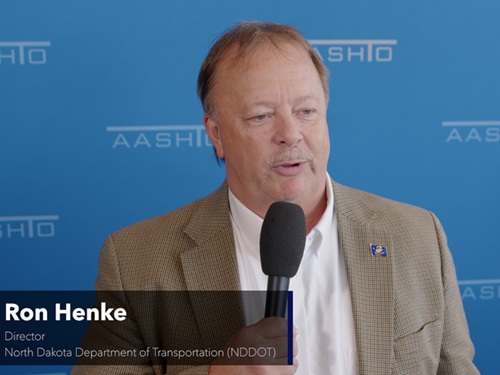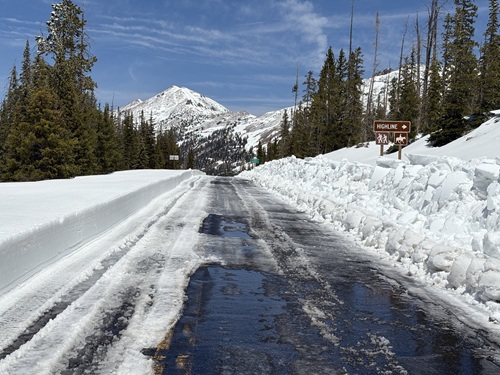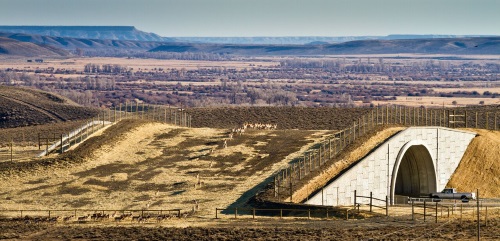Photo: Wildlife Highway Crossing Structure/Jeff Burrell
A study conducted by scientists from the Wildlife Conservation Society and Oregon State University using Wyoming Department of Transportation crash data confirmed that efforts to protect migrating pronghorn deer by installing eight “crossing structures” in combination with 8-foot-high roadway fencing along a nearly 12.5-mile long stretch of U.S. Highway 191 in western Wyoming are reducing collisions between motor vehicles and wildlife.
This study – entitled Highways, crossing structures and risk: Behaviors of Greater Yellowstone pronghorn elucidate efficacy of road mitigation in the Global Ecology and Conservation journal on Aug. 15 – identified a 70 percent reduction in wildlife-vehicle collisions after the installation of crossing structures and fences, while also providing evidence that wildlife can adapt to using crossing structures for migration needs.
Conducted between 2011 and 2014, the WCS/OSU study – made possible with funding from National Fish and Wildlife Foundation and the U.S. Bureau of Land Management – aimed to determine how the migrating pronghorn were behaving in response to the new construction and to assess the time it took for the animals to adapt to the novel structures on their migratory route. The researchers also compared pronghorn preferences for underpasses or overpasses via “focal observations” using high-powered Nikon-Prostaff spotting scopes
While wildlife crossing structures have been used in other areas to prevent wildlife-vehicle collisions, few studies have focused on potential elevated stress reactions to these projects over time, WCS noted.
“The take-home message of this latest study is that, while pronghorn became more attentive at the new infrastructure two years [after] construction, they also more readily used the crossing structures over time,” said Renee Seidler, lead author on the study and a WCS scientist at the time of the study. She is now the state transportation specialist for the Idaho Department of Fish and Game.
“The fact that pronghorn acclimated to these new structures increases the likelihood that a 6,000-year-old migration will continue, and that the $9.7 million invested in this project was a successful investment to help preserve this unique migration and increase the safety of the traveling public,” Seidler added.
Data collected during the construction phase of the crossings and fences revealed that pronghorn were wary when encountering the new structures, preferring instead to cross the highway without using overpasses in spite of the risk of being hit by vehicles. But by the end of the four-year study, all animals used the crossing structures to travel across the roadway.

Also, the researchers found that, given the choice of an overpass and an underpass, the pronghorn exhibited a “clear preference” for the overpass. The scientists also noted that, while vigilance behaviors increased over time, higher-level stress behaviors were low and did not increase over time.
Concurrently, pronghorn crossing success rates – which is a measure of how many times an animal attempted to cross the highway or a structure before they successfully crossed – increased over time, suggesting the animals became more acclimated to the structures within the four-year observation period, noted Jon Beckmann, one of the study’s other authors and director of science for the WCS Rocky Mountain West Program.
“This study is helpful for wildlife managers on a number of levels, one of which is to provide a baseline of understanding on how migratory wildlife may respond to modifications of important migratory pathways over time,” he added. “The research also can help inform mitigation considerations for migratory land species in other regions across the globe.”
 Nation
Nation
North Dakota DOT Profiled in State DOT Update
July 3, 2025 Nation
Nation

